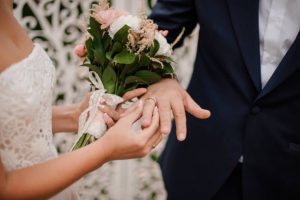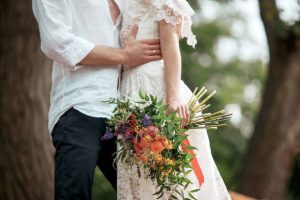The extent to which the location influences how you approach photography will obviously be contingent on the degree of difference from the place you usually shoot.
However, let’s consider the most typical scenario, that is when a photographer who lives in a climate that is temperate (Northern or Central Europe, North-East or North-West USA or Canada) and travels for a shoot at a sub-tropical or tropical area, like Hawaii as well as the Caribbean.
The first thing to discuss with your customer (after you have received the date for the wedding and the venue) is the best time to hold the wedding.
I’ve photographed weddings on the Caribbean beach that has no shade after 2 pm in July. And the heat can be intense! 🙂
In addition to the heat, because the lighting is hard and unpleasant and no one can keep their eyes open without wearing sunglasses or squinting, the contrast will be too high. The typical flash on camera isn’t up to the task of filling with the conditions.
It is usually the case that the guests have no idea about the possible issues or if they are planning to marry at an all-inclusive hotel with multiple weddings set for the same day.
If you are able, convince your client to either have the wedding ceremony in a shaded area or (better) shift the ceremony time to one hour prior to sunset.
Weddings at sunset
Sometimes, you’ll hear your bridesmaids say, “I want to get married at sunset, just as the sun touches the horizon.”
It is usually an unwise choice. For one, as you’re aware, my wedding is around 15 minutes late. Also, in the tropics, the setting of the sun is at a more steep angle than it does further to the north or south, which means the time of twilight can be extremely short. If your wedding ceremony takes place in the evening, all photographs will be taken in darkness, and the stunning location won’t be apparent.
Therefore, “sunset weddings” need to begin at least an hour before sunset to ensure the best lighting happens following the ceremony right at the time you’re looking to snap photographs:
Not only will the lighting be more pleasant, but also the day will be cool enough for everyone to feel more at ease.
In terms of exposure, the light levels shift quickly during this time of the day; therefore, be aware of your shutter speed. A shooting manual is generally a good choice because the camera’s meter can be easily manipulated by the direct light, the couple’s clothing, and frequent reflections off of the sand. I shoot in RAW, so you have some flexibility in post-production; however, If you’re a JPEG photographer, you’ll need to be aware.
Ideas for photos
It’s possible to feel confused about what to shoot if you are on a beach that is open with no typical props like doors, trees, walls, and so on. However, there are many things you can create using just light shooting from various angles, creating side-lit and silhouetted images. Using fill flash to offset the setting sun can be beautiful as well. If you have an open shade that you could utilize, such as a shade structure, an awning, or a veranda, use it. You’ll receive gorgeous light; however, your subject will be relaxed.
A beach wedding that begins an hour prior to sunset can be more enjoyable for everyone, and the light is better. Shoot from different angles to capture the warm, soft lighting direction as sunset approaches. If the beach is white sand, it will be an excellent light to fill shadows.
If you face a bright sun with, try to find an open area (such as on the side of a building or underneath an umbrella). Your subject will feel comfortable, and you’ll be able to enjoy soft light as well as beautiful bright lights in the eyes. Even beaches that aren’t crowded typically have backgrounds that you can utilize. Here, I invited the couple to sit down and relax in the grasses along the dunes.
If you have a flash, then you can use it outside of your camera to illuminate your subject while showing the colors of the sun’s setting… …or opt for a full-on look!
When the sun is gone down, don’t forget to stay. While tropical twilight won’t last long, it can provide incredible soft light, which is great for more intimate, delicate portraits (such as the photo above of the couple seated on the sands).
I tend to shoot until there’s none at all (or until clients decide they’ve got enough! ):



